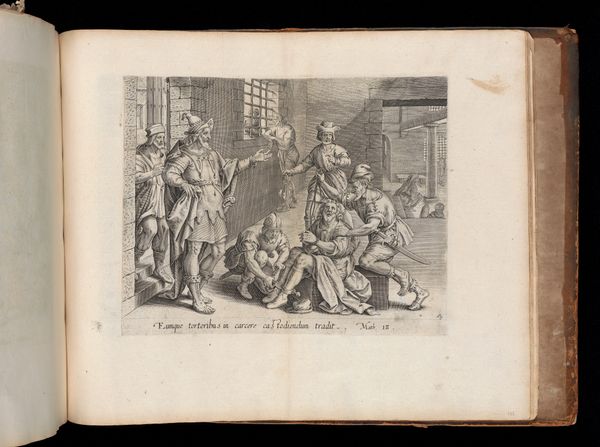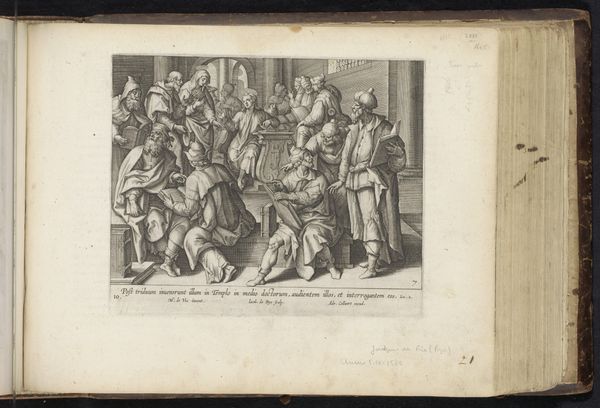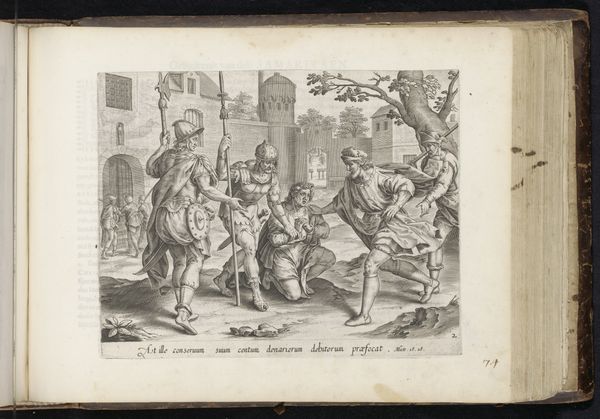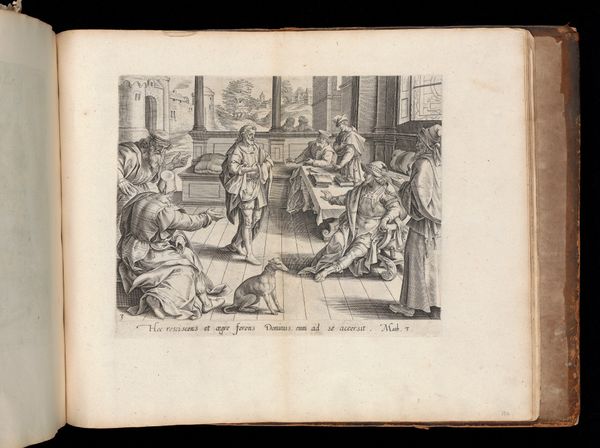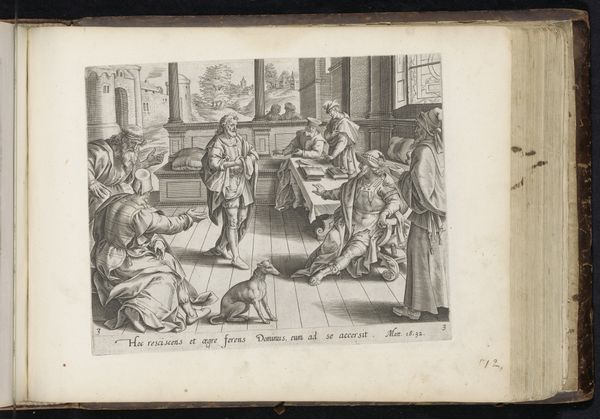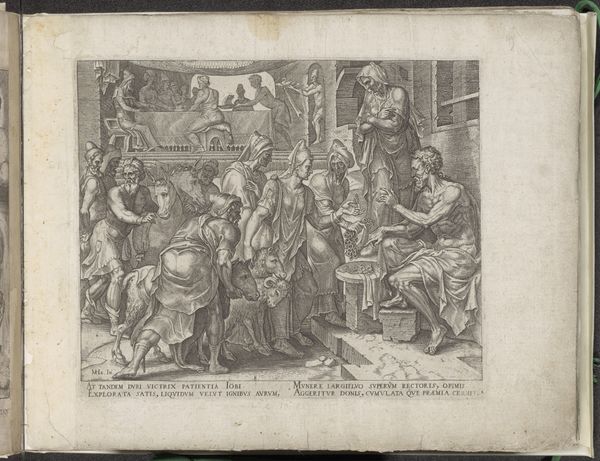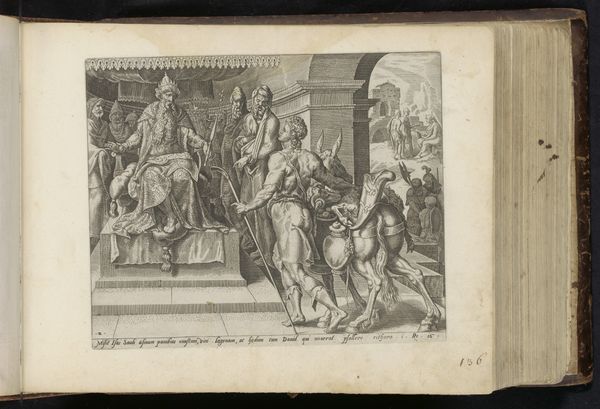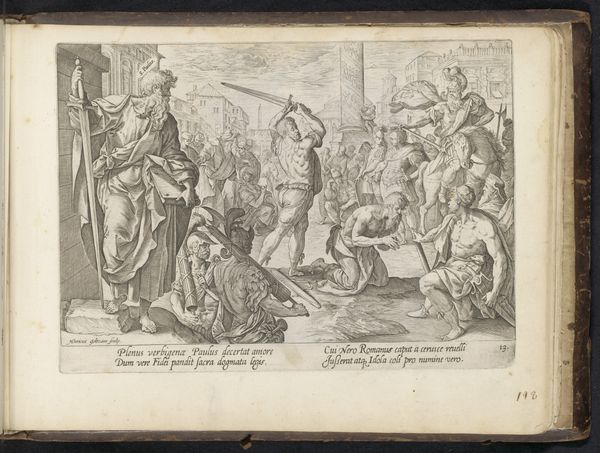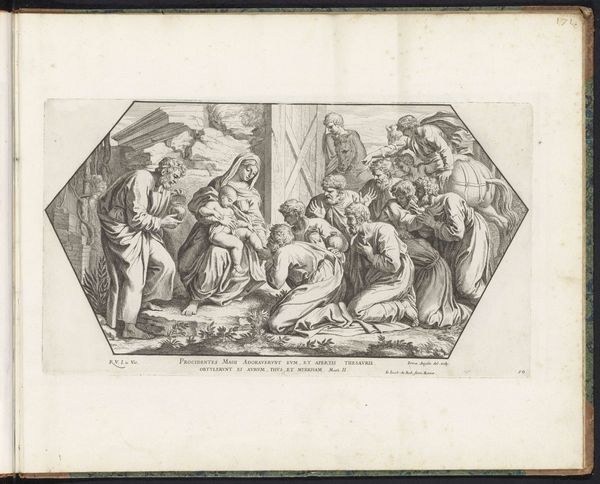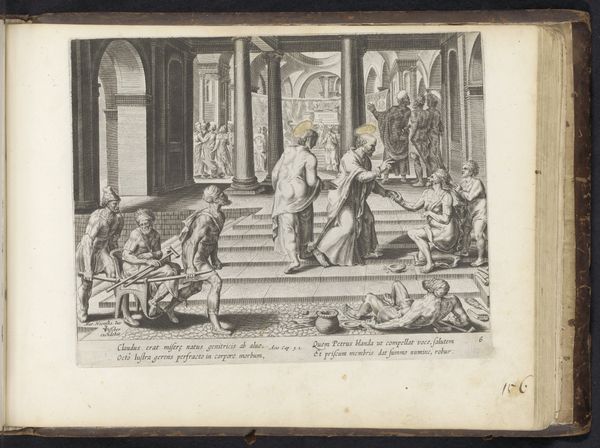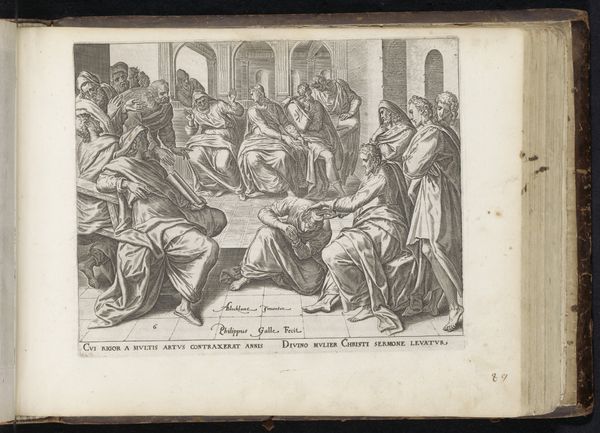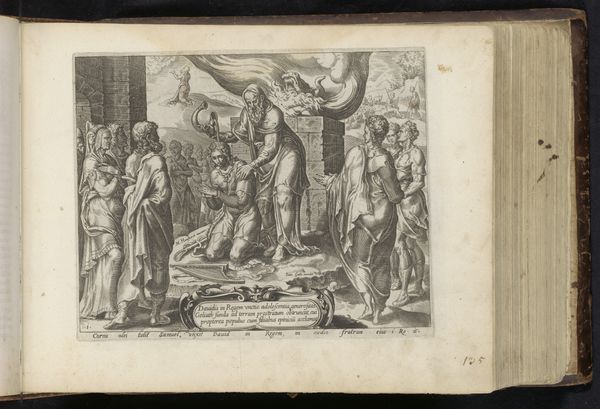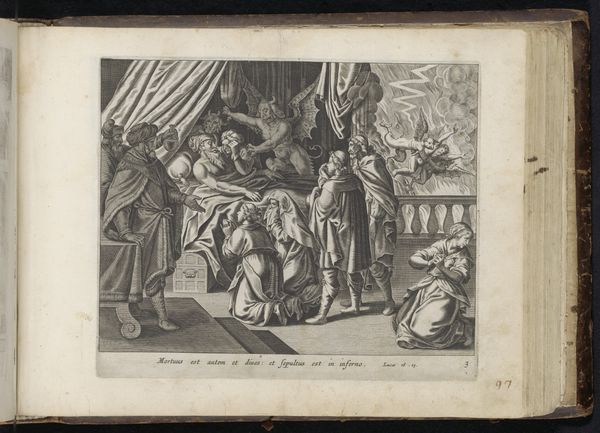
The Servant Sending his Fellow Servant to Prison, from The Parable of the Unmerciful Servant, bound in Thesaurus Sacrarum historiarum Veteris et Novi Testamenti 1585
0:00
0:00
drawing, print, etching, paper, ink, engraving
#
drawing
#
medieval
#
narrative-art
# print
#
etching
#
figuration
#
paper
#
ink
#
men
#
history-painting
#
engraving
Dimensions: Book (closed): 11 7/8 × 15 3/8 × 2 1/16 in. (30.2 × 39 × 5.3 cm) Plate: 7 3/4 × 9 13/16 in. (19.7 × 24.9 cm)
Copyright: Public Domain
Curator: This engraving, dating to 1585, presents a scene from the Parable of the Unmerciful Servant. It’s part of a larger collection titled "Thesaurus Sacrarum historiarum Veteris et Novi Testamenti." The print utilizes etching and engraving on paper, presenting a tense, almost frantic scene. Editor: My initial feeling is that it seems overtly harsh. The detail is remarkable for the size, but the figures almost feel crammed together, heightening the sense of cruelty in the subject matter. You can almost feel the poor servant’s desperation. Curator: Absolutely. The social implications of debt and the power dynamics it creates are central to the parable. Consider the broader context of 16th-century Europe. Financial obligation carried immense weight. Religious instruction often used examples like these to reinforce a hierarchical order. Editor: And I see it’s really hammered home through the visual representation too. I'm interested in the execution; you see the textures, from the rough ground to the detailed armor. The artist’s skill really shows, turning simple ink and paper into something quite visceral. It speaks to the availability of printmaking within that time; a means of mass production of moral concepts. Curator: Precisely. The choice of printmaking democratized access to such moral tales, making them available beyond the elite. Disseminating ideological beliefs, religious and otherwise. Editor: The expressions on each figure too are particularly telling: terror on the servant’s face being dragged, indifference on the master, brutality in the guards. It does seem like there is some element of almost staged reality in its presentation though, making me question if its moral concept is as altruistic as portrayed. It is almost theatrical in a way. Curator: These parables were intended for didactic purposes, and the staged feeling emphasizes the gravity of the message—one of forgiveness and consequence, meant to resonate deeply within the social and political frameworks of the time. Editor: Makes you wonder how much the accessibility and mass manufacturing via printing shaped common ideas. I never realised paper and ink had so much socio-political impact! Curator: Well, examining these artworks, their place of production and method of dissemination always offers valuable insight. Editor: Yes, this has definitely shifted my thinking about it. Seeing not just the image, but the processes and the whys gives the work an altogether different quality.
Comments
No comments
Be the first to comment and join the conversation on the ultimate creative platform.
